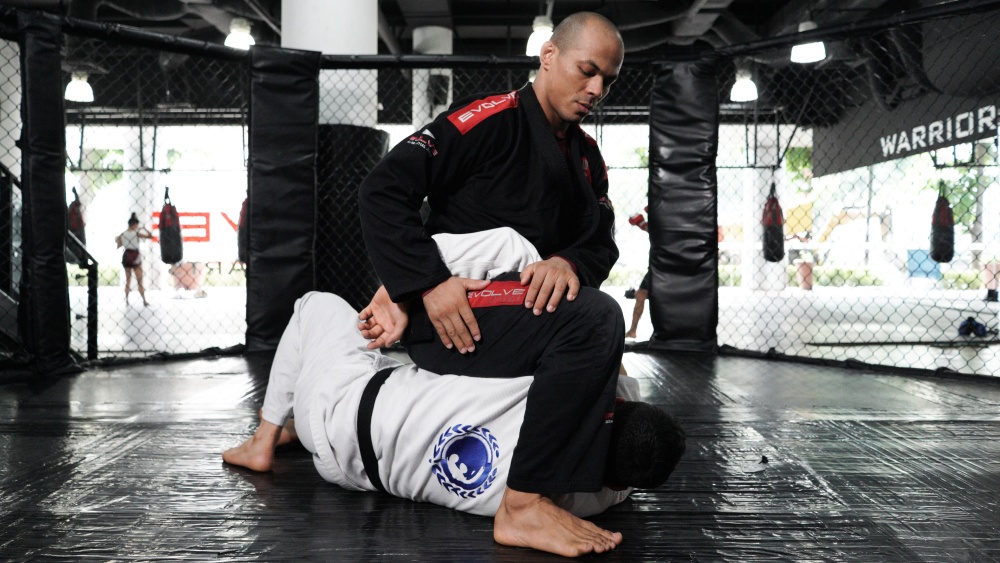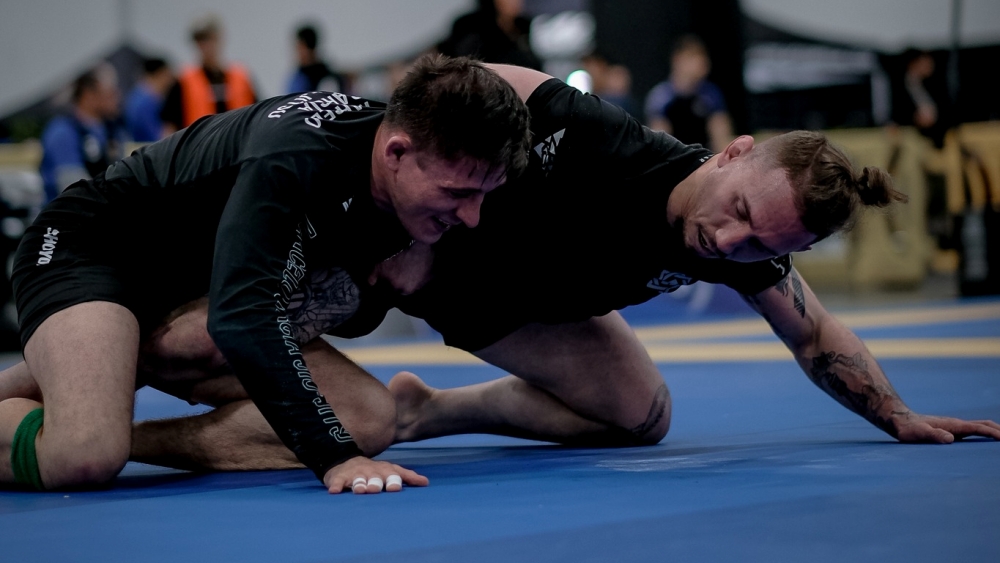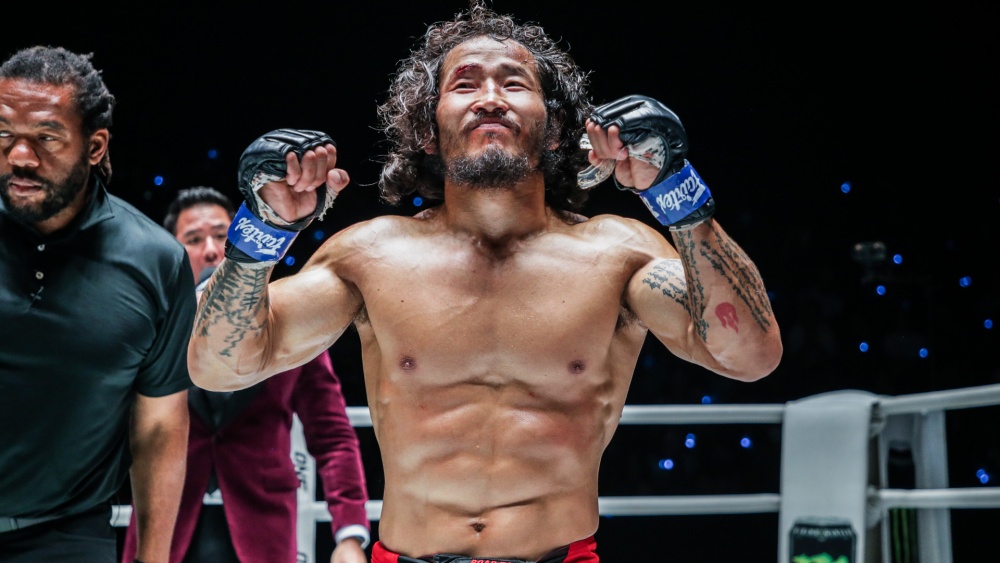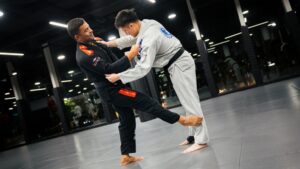Many martial arts enthusiasts compare a Brazilian Jiu-Jitsu match to a chess game. In chess, there are different moves and options you can select from. You can focus on a sequence of moves; you may also work on various tactics and strategies to defeat your opponent.
In the context of BJJ, the positions you can do are akin to the tactics you apply in chess – both create dilemmas and exploit openings for you to capitalize on. There are many amazing submissions in BJJ, but not all are created equal.
There are some submissions that, while effective, are sadly low percentage. Others are unique and can guarantee a tap when applied perfectly. This article will discuss a powerful and confining submission known as the monoplata.
What Is The Monoplata?
The monoplata is a variation of the shoulder lock from the 3/4 mount position. The 3/4 mount, often known as the 1/4 guard, is a position where your foot is stuck between the opponent’s legs, similar to when the bottom player is about to be knee slice passed. The typical goal of the top player is to either pass the guard to go to mount, or finish with a submission.
The monoplata was popularized by BJJ legend Marcelo Garcia in the late 2000s. The monoplata is a submission where you mount and trap an arm above your hips and underneath the armpit, while their body faces to the side. The position is basically a trap, separating the opponent’s arm whenever they get an underhook, or to close the distance while being mounted.
While the monoplata is similar to a technique known as the omoplata, it is unfortunately not as well known. The omoplata is highly regarded by many grapplers as it is a member of the three submission brothers in BJJ: triangle, armbar, and omoplata.
This is not to say that the monoplata is not effective, though. In the hands of a capable martial artist, the monoplata can be extremely devastating. This is only amplified if you use this technique in MMA, as it is a fantastic partner to ground strikes.
How To Perform The Monoplata
The monoplata uses one of the most powerful principles in grappling: using the legs and bodyweight against the opponent’s upper body to create a mismatch. Although the monoplata may look awkward and unfinished, it is a very nasty attack and can end a match in seconds.
Perhaps this awkward nature is the reason why it is not as popular as it should be. The initial pause when moving into the position, as well as pivoting at an angle to perform the submissions, can be tricky for beginners to do. But once mastered, it is a masterful technique and can control even the most formidable opponents.
In this video, BJJ legend and one of the most exciting grapplers ever, Jeff Glover, shows how to perform the monoplata. The idea of the monoplata is to separate the arm as your opponent turns to you to get an underhook. When you are in top side control, it is common for an opponent to react in the said manner to start a single leg attack or to take the back.
If the opponent does a great job of framing and going for the underhook while in bottom side control, it is the best time to lean and swing your leg to trap the opponent’s arm. This puts you into the monoplata position, which looks like the top or mounted version of the omoplata. The top of your thighs and rib area are the ones controlling the trapped arm, making both your feet and hands available for attack.
The availability of the hands and feet opens up many submission opportunities, such as the wristlock, guillotine, kimura, omoplata, triangle, and armbar. The monoplata proves its effectiveness from top side control. It is an excellent reactionary technique once you feel your opponent pummeling for an underhook to improve their position.
Monoplata And Armbar
As mentioned above, there are many submissions that you can transition from the monoplata, and one of them is the reliable armbar. BJJ black belt Dinu Bucalet demonstrates a cool option to transition to the armbar from the monoplata. The great thing about the monoplata is that even if the opponent has a solid defensive bottom guard game where, most of the time, one of your legs will get trapped in the half-guard, the monoplata can still be applied.
To transition to the armbar starting from side control, swing your leg underneath the opponent’s arm and perform the monoplata. The armbar is a good option if your initial attempt to finish with the monoplata fails, especially if your opponent has flexible shoulders.
When the opponent refuses to tap and sticks their arm out, remove the trapped arm from the monoplata and switch to an armbar. This will be highly effective since their body is perfectly positioned for the armbar.
Monoplata From Triangle Choke
The monoplata from triangle choke is another effective technique. The Waza Brazilian Jiu-Jitsu Youtube Channel shows a fantastic way to sweep opponents if you have trouble getting their arm out of the triangle and finish with the monoplata. This triangle sweep to monoplata is highly useful when performing the triangle kimura combo. Typically, your triangle will be locked on the opposite side in a triangle kimura combo from the closed guard.
A common way to defend the triangle is by hiding the arm below the attacker’s hips while gripping both hands. When this happens, look away, throw your hips into the opponent and perform a hip bump sweep. As the opponent rolls and lands on their back, you will most likely land right into the monoplata position.
After the sweep, control the opponent’s elbow and turn your hips to finish the monoplata. Apply the same principle of the armbar for monoplata if the opponent’s arm comes out by trapping the opponent’s head with your legs. Don’t forget to pinch as you catch their arms with your armpit, bringing your elbows to the side as you lean back and finish.
Final Thoughts
In training Brazilian Jiu-Jitsu, it is always a good idea to be familiar with when, where, and how techniques work. To do this, you must have a decent understanding of body mechanics, as even a slight change in positioning can be the difference between one technique to another. Familiarity opens many viable options from unique positions.
You don’t have to be an absolute master with all techniques in the BJJ. That is unrealistic and honestly impossible to do. Just work on moves that positively affect your game.
It is, however, critical to know the common reactions and defenses based on your style of grappling. Studying the expected responses from your favorite positions, like the one we learned with the monoplata, will only make you a better grappler.
You may also llike:

















